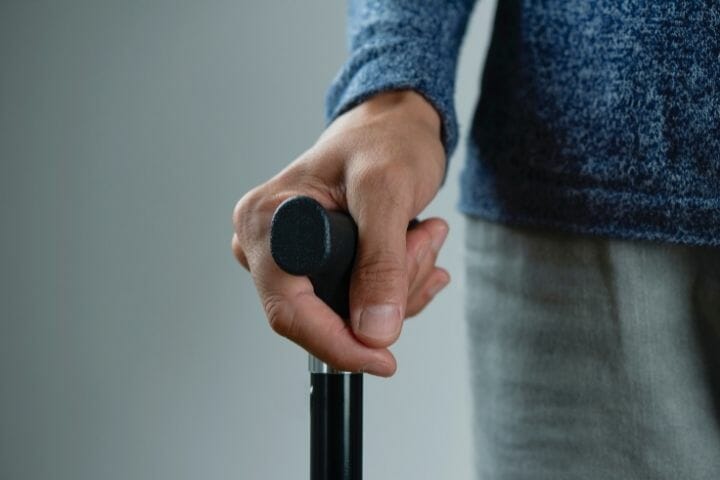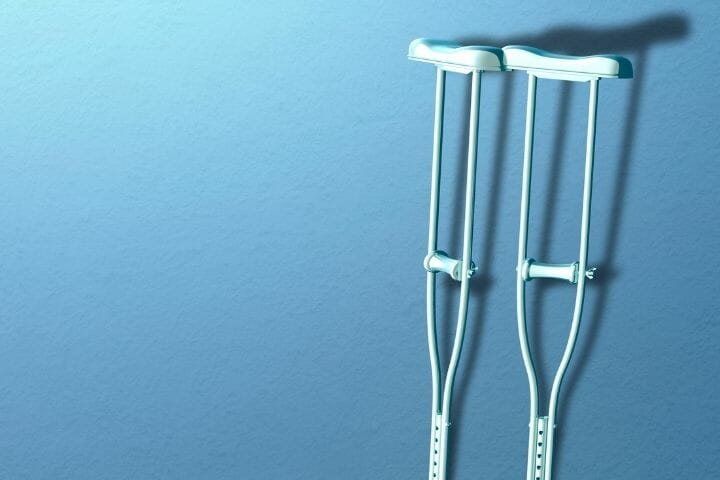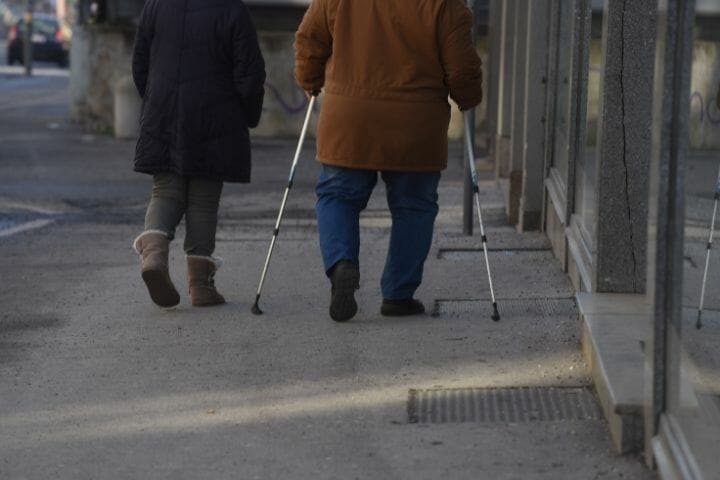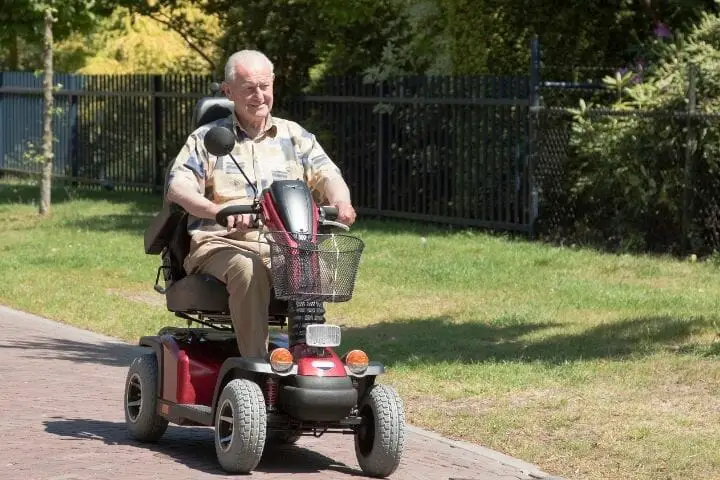As people age, mobility is a common issue. Choosing the right mobility aids for seniors can be complicated due to the wide range of such products.
Contents
Can you live your life without moving around? Being inactive and not able to walk paints a very depressing picture. However, as people grow old, they may face a lot of difficulties. Older adults tend to lose muscle mass and have joint problems. They may find it challenging to move around and do their day-to-day work due to some injury or disability.

Approximately 6.8mn Americans above the age of 65 need mobility aids. If any of your senior family members are finding it difficult to walk or move due to any health condition, it is essential to look for the right mobility aids.
When it comes to choosing the right mobility aid for seniors, it becomes problematic. This is because a range of mobility aids is available that range from canes, crutches, lifting seats, walks, and others. You need to choose the right mobility aid for seniors that fit their needs and ensures safety, and it will help them move with more freedom and independence.
In this article, let us look at different types of mobility aids and pick the right ones, wherein we will cover:
- Assessing Mobility Needs.
- Different Types of mobility aids.
- Things to consider when choosing a mobility aid for seniors
- Budgeting for mobility aids
- Costs and insurance coverage for mobility aids.
Assessing Mobility Needs
Choosing the right mobility aid for your loved ones is essential as per their needs and safety. You can talk with your loved ones and know what difficulties they are facing. Accordingly, you can choose the right mobility aid for them. It is advisable to consult their physician before buying any mobility aid.
There is a range of mobility aids available in the market. You can first try and test the mobility aid and look at which one is more comfortable for your loved ones before making a purchase.

Different Types Of Mobility Aids
There are different types of mobility aids available as per the requirement and needs of people. Each mobility aid provides different types of assistance and support. Whether you need minimum or maximum support, the below mobility aids provide great assistance for moving around and walking.
#1 Canes
Canes are the best option for people who require minimum support. It is the most common mobility aid that seniors use. As people grow older and reach their seventies, they may have minor balance issues.
Cane is very helpful for them and helps reduce joint pains. It is pretty portable and easy to use. Canes come in different sizes and can even be adjusted as per the use.
Note that it provides support on only one side of the body and does not support the entire body weight. It places pressure on the hands and wrists while moving.
So if your upper body is weaker, this might not be the best option for you. Canes come in different types and styles, and the common ones that people use are:
- Quad Canes. These canes are a bit heavier and come with four feet at the bottom. The bottom part comes with rubber caps, so it helps reduce slippage. The height is adjustable as per convenience. This cane is recommended for people with some severe mobility issues.
- Adjustable Canes. Some canes are adjustable. These might not be as stable as the standard canes.
- Forearm Canes. This type of cane has extra support. Some people even call it crutches. It is a great walking aid, and you can put pressure from your lower body to your upper body without worry.
Canes also come with different types of handles to choose from. You can choose the type of handle as per your comfort and convenience.
- Round. Standard canes have round handles, and it gives a classy look. You can hook it up in the chair or door with ease. Some people may find it difficult to hold the handle for a long time.
- Ergonomic. Some canes have an ergonomic design. They have an excellent grip, help reduces shock, and give good hand support.
- Offset. This type of handle is slightly bent and evenly distributes the weight of the user. It helps reduce wrist strain and comes with a comfortable grip.
- Derby. The handle is pretty thick and curved. It provides more significant support and comfort than round handles. It is recommended for people with arthritis to use this type of handle.

#2 Crutches
Crutches are similar to canes. People who suffer from temporary injury use crutches. It helps transfer the weight at the bottom to the upper body. They are much better than canes but require a lot of upper body strength to use. This might not be suitable for people who have severe balance issues.
There are different types of crutches to choose from. Knowing the design and style each crutch provides will help choose the right crutch for seniors.
- Forearm Crutch. Forearm crutches are a better option for people looking for long-term use. People who choose this must-have upper body strength and coordination. This type of crutch helps reduce wrist pain.
- Underarm Crutches. This is a standard type of crutch that supports your armpit. This crutch requires less upper body strength than other crutches. This is ideal for short-term use.
#3 Walkers
Walkers usually have a metal body and come with four legs usually. Some walkers come with wheels, so it is easier to move around.
The bottom part of the walkers is much wider than any other mobility aids. So it provides excellent support and balance. Walkers are usually lightweight and can be folded, and let us look at different types of walkers.
- Two–Wheel Walkers. These have wheels at the front, which makes moving around easy.
- Four–Wheel Walkers. These types of walkers are designed for people who do not need to lean on the walker. It has wheels on all four sides.
- Standard Walker. These walkers require the user to lean on the walker and offer friction. It comes with a rubber base on each leg and makes walking easy without worrying about the slippage on the floor.
- Adjustable Walkers. You can adjust the handle of the walker as per the user’s height and fold it for easy storage and transportation.

#4 Rollators
Rollers are a great alternative to walkers. Older people do not need to put a lot of effort into pushing this mobility aid. The swivel casters at the bottom make it easy to move around. These come with brakes for safety. These walkers come with wheels, seats, and handlebars.
Rollators are helpful for seniors who require some assistance but are not considering using a wheelchair.
#5 Wheel Chairs
Wheelchairs are the best option for people who cannot walk at all or get tired quickly. Users can use the wheelchairs by themselves or may require some assistance. Non-powered wheelchairs require upper body strength.
So people may need some help to move around. At the same time, electric wheelchairs offer excellent mobility and autonomy. These are a bit expensive as well.
#6 Mobility Scooters
Nowadays, mobility scooters are most popular among seniors. These scooters are electrically powered and are suitable for outdoor use. Seniors with low body strength can move around with ease. But it might not be suitable to ride on all terrains.
Things To Consider When Choosing A Mobility Aid For Seniors
Health
Before choosing a mobility aid for seniors, it is essential to first look at their health conditions. It would help if you are looking for how long they can stand or sit in one place and their difficulties.
If they need minor assistance to move, then a cane might be the best option for them. But if they find it very difficult to sit or move, choosing a walker, wheelchair, or rollator is better. You can consult your doctor to choose the best one for your loved ones.
Weight
Any mobility aid you choose comes with a weight limit. You need to make sure to choose the mobility aid that will be able to support the weight of your loved one.
Size
It is essential to look at the size of the mobility aid before making a purchase. You need to make sure the mobility aid you choose fits your loved ones properly and is comfortable to use.
Make sure it can support the weight of the user. However, mobility aids are usually apt for all users. Some mobility aids even have an adjustability feature which makes them more flexible and easy to use by anyone.

Accessories
Nowadays, having additional accessories and fixtures is a part of today’s mobility aids. The most common and important one is the grip, as it helps hold the walking aid more comfortably while moving. You need to make sure the grip is comfortable to hold and provides proper friction and cushioning.
Nowadays, the walkers come with brakes, so it is easy to have control of the wheels and stop when needed. You can choose the type of walkers that come along with baskets, trays, and pouches to store things.
Budgeting For Mobility Aids
Before purchasing any mobility aid, the essential thing to look at is the budget. Getting the right mobility aid is necessary, but not everyone can afford expensive ones.
If you are purchasing any mobility aid out of your pocket, you need to look at the cost and budget. Canes usually range between $15 to $25. At the same time, walkers or rollators range above $40 and can go up to $200. This usually depends on the features and build quality. If you are looking for electronic mobility aids, they will be expensive and may cost above $1000.
Costs And Insurance Coverage For Mobility Aids
You can choose to buy a mobility aid either online or from a local store. But keep in mind that experts know all the mobility aids and accessories, and they will be able to recommend the best one for your loved ones and explain its use.
Experts will tell if the mobility aid is covered under insurance. No matter what type of mobility aid or equipment you choose, insurance companies require a lot of paperwork.
You can check if your insurance covers the mobility aid of your loved ones. The insurance coverage plans will differ by different providers and may require a doctor’s prescription.
For any customized walker or wheelchair you need to buy for your loved ones, you need to talk with your therapist. Note that the insurer will cover the cost as per the needs of your loved ones and won’t look at their comfort or convenience. If you purchase some extra accessories, you need to pay out of your pockets.

Who All Can Benefit From Walking Aids?
Walking aids are helpful for anyone with balance or mobility issues. The type of mobility aid will depend on the needs of the user. Mobility aids are helpful for people who have arthritis, disabilities, fractures, heart diseases, obesity, joint pains, sprains, and any walking impairment.
Risk Factors
Though mobility aids come with a lot of benefits, they come with some risks as well. Using underarm crutches can lead to crutch paralysis if the user applies a lot of pressure on their armpit.
If the user uses any of these mobility aids in the wrong way, it can lead to injuries. Seniors are more prone to injury if the mobility aid is not used correctly. They need to have the knowledge and know-how to use these devices correctly. It is advisable to consult their therapist or a doctor and learn to use the mobility aid properly.
Wrap Up
Decreased mobility due to surgery or old age impacts one’s ability to have an independent life and involves some risk to their safety.
It is essential to look at the safety and needs of your loved ones. Choosing the right mobility aid will help reduce the risk factors and offer excellent stability and support.

Just make sure to consult your physician before purchasing any mobility aid and know what is best for them.
We hope this article has given you a good insight into the different types of mobility aids for seniors available nowadays. This guide will give you everything that you need to understand about which mobility aid to use under what conditions and how to choose one appropriate for your loved one’s situation.
If you liked the content, please do not forget to share it with others on your social media platforms and in your internal groups as well.

